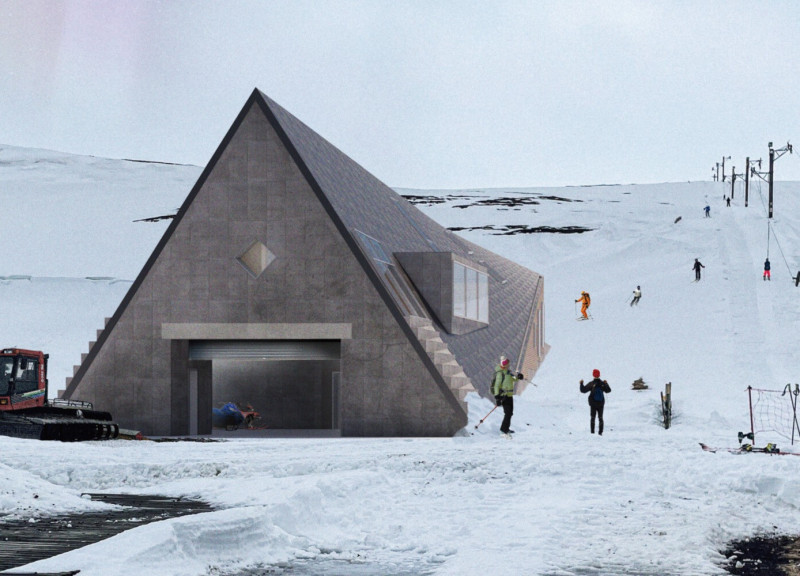5 key facts about this project
From a general perspective, the architecture is characterized by a minimalist aesthetic underscored by clean lines and an uncluttered approach to volume and form. The project emphasizes transparency and connectivity with its surroundings, as large glass facades allow natural light to flood the interior while providing visual links to the exterior landscape. This use of glass not only fosters a sense of openness but also introduces an element of fluidity between indoor and outdoor spaces.
Functionally, the project is designed to accommodate a diverse range of activities. The layout is intelligently conceived, with clearly defined zones that support both communal and private functions. For example, open-plan areas promote social interaction, while dedicated rooms provide necessary privacy and quiet spaces for focus. This thoughtful arrangement reflects an understanding of contemporary lifestyle demands, where work and leisure increasingly intermingle.
A distinctive feature of this design is its emphasis on sustainability, which is woven into the architectural fabric. The use of eco-friendly materials, such as reclaimed wood and recycled metal, illustrates a commitment to minimizing environmental impact while promoting resourcefulness. Additionally, the roof incorporates a green landscape, which not only aids in temperature regulation but also provides additional recreational space for occupants, aligning with the project's overall thematic approach toward sustainability and well-being.
The material selection merits special attention as it plays a crucial role in defining the project’s character. The primary materials include reinforced concrete, which provides structural integrity and durability, while timber accents offer warmth and texture. Complementing these are high-performance glazing systems that enhance energy efficiency, allowing for substantial natural light entry while reducing the need for artificial lighting. This combination of materials articulates a narrative that highlights both modernity and an appreciation for natural elements, fostering a sense of tranquility.
In terms of unique design approaches, this project boldly integrates biophilic design principles, wherein the incorporation of natural elements serves to improve occupant well-being and productivity. The inclusion of indoor gardens and strategically placed windows framing views of nature reinforces this connection to the environment. Furthermore, the project embraces innovative technologies, such as automated shading systems, which adapt to changes in sunlight, thus optimizing energy use while ensuring comfort.
The relationship between the project and its geographical context is also of paramount importance. Situated within a vibrant urban landscape, the architecture respects the scale and rhythm of its surroundings while gently standing out through its distinctive material palette and design language. The building aligns with local design traditions while challenging conventions, thus encouraging a dialogue between the old and the new.
In essence, this architectural project represents a culmination of thoughtful design, sustainability, and functionality. It stands as a testament to contemporary architectural ideas that prioritize human experience and environmental stewardship. Readers interested in delving deeper into the architectural nuances of this project are encouraged to explore the architectural plans, architectural sections, and architectural designs presented, as they offer further insights into the comprehensive thought process that guided this endeavor. Engaging with these elements may reveal deeper layers of the architectural narrative, highlighting the subtleties that contribute to the overall design success.


 Jusik Lee
Jusik Lee 























